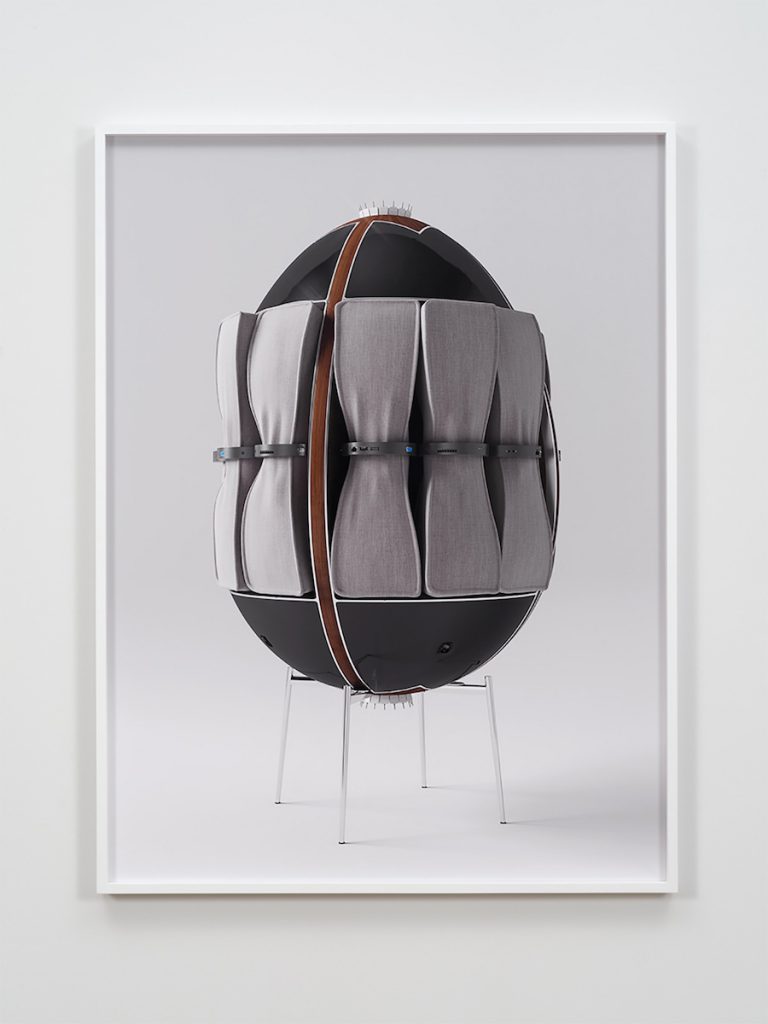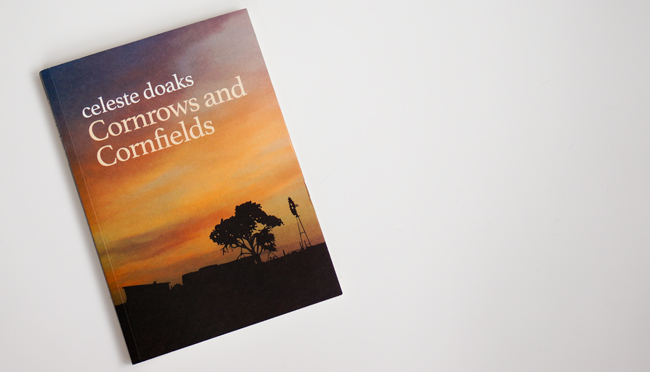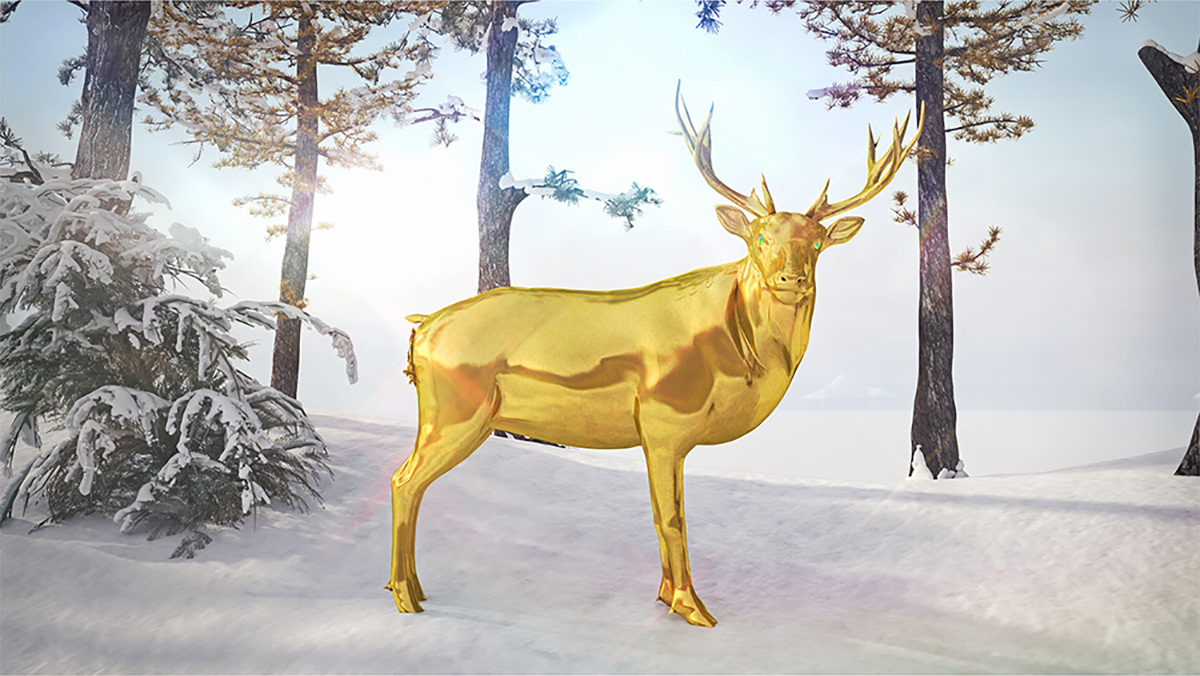Why is the future always envisioned as dystopic? Maybe it’s relics from 60’s and 70’s sci-fi, or it could be the constant reminder that each month we break the heat index record. It didn’t used to be that way; at some point, our futuristic visions flipped.
If you dig back a century to futuristic visions of the past, you can find the utopian renderings from the World’s Fair of miraculous flying cars, dinner prepared by the touch of a button, and colonies on the moon. Sometime after World War Two, though, the optimism faded into the era of Vietnam, and it seems we’ve never regained our cartoonish optimism. Just look at the self-driving cars that are practically at our doorstep; instead of being excited about being able to legally text while driving, we’re terrified of sentient cars running over our children.
When it comes to a futuristic vision, artist Jonathan Monaghan sits firmly on the fence. His current show at the Spagnuolo Gallery at Georgetown University includes large prints and looping videos that gives the viewers a glimpse of his fantastical hyper-realized topos.
His “After Faberge” prints are exquisitely detailed 3D renderings of egg-shaped monuments. His two videos, “Escape-Pod” and “Mothership,” offer visions of an alter-reality based on commodities from our present, adornments and architecture from our past, and an almost triumphant look at what may come. They are places built for people, by people, but they are also lonely and sterile. They reference austere wealth and yet there is nobody around to relish it.
At Spagnuole Gallery, Jonathan’s work is impressive, slick, and beautiful. His work is meticulous, and the attention to detail and surface is flawless. Maybe that’s what the future will be like, for those wealthy enough to be able to enjoy it?
BmoreArt: The first time I saw a real Faberge Egg in person, I was shocked at the scale and detail of them. I never expected them to actually be egg-size, and seeing them in context really blew me away. Looking at yours, I’m impressed by the attention to detail, as with all your work. But the scale is interesting to me. The prints are huge, much bigger than I expected. Can you tell me about how you decided on the scale? And can you speak about the imagery you used?
For the series “After Faberge,” I wanted to create works which were imposing and mysterious. I researched the designs of the real bejeweled Faberge eggs and interpreted them into something that sort of a resembles a piece of furniture, and indeed parts of my eggs are modern furniture components. Other imagery included electronic ports and historic architecture. Although the works are much larger, they still have the same appreciation of fine detail.

The “EscapePod” video seems to reference ubiquitous non-places and Supermodernity that Marc Augé wrote about – airport duty free shops, shopping malls, and the over-stylized shops that lack character. I know you travel a lot for residencies and shows, how has the time you’ve spent in non-places influenced this work?
Yes, there is certain coldness and unfulfilled desire to the spaces in “Escape Pod.” Augé is a great reference to this. The spaces are clinical, sleek and sterile. But what is it we really desire? The walk-in closet/bedroom in “Escape Pod” is taken from ad in a luxury design magazine. Our desires are commodified and like my films there is no clear way out.
Escape Pod (trailer) from Jonathan Monaghan on Vimeo.
I imagine the months of work it took you to create each piece and part of those videos, and then I imagine you clicking away in a dark room lit only by the screen you’re looking at. And then I think of these hyper-realized settings, and super detailed work, and I wonder if you get sucked into these settings.
I wonder about the details that you might have spent hours, or even days on, that I missed even after watching the loop three or four times. I think that makes the work even more interesting, but is there a point of diminishing returns for you? Are there times when you think you have gone too far?
I think there is a level of craft to my work. We tend to think of that notion playing towards wood-sculpture or realistic painting or wherever the artist’s “hand” is at work. I think there can be value to that and I try to carry this over into my films. It takes time, but who ever said art has to be made fast?
So it’s clear that your work points a finger at the level of consumerism, and wealth that it would take to live ostentatiously. Does the Golden Deer represent attaining that elusive wealth? Or is it a sort of mascot for it?
In mythology, the deer represents a number of things. My works references the myths and historical imagery of the stag but not directly or specifically. Similar to how myths develop throughout human history, and also much like dreams, the meanings get continuously re-interpreted and the symbol can stand for multiple things.
With the “Escape Pod” video on a seamless loop, it might take a while for the viewer to realize that there isn’t a narrative or an arch. I think that works well, and allows room for you to present your ideas with the freedom to let the ideas stand for themselves, is that the point? Or are you making room for interpretations?
There is lots of room for interpretation in my work and that’s the point. I am not saying anything specific. The work re-purposes what makes up much of modern consumer culture, and people can draw their own conclusions from seeing it in a different way.
*****
Author Michael Dax Iacovone is a DC based artist who works in photo, video, maps and installation.
Mothership: Animations and Digital Prints by Jonathan Monaghan was on exhibit at Georgetown University’s Spagnuolo Gallery through October 16, 2016.
Images courtesy of bitforms gallery, New York







